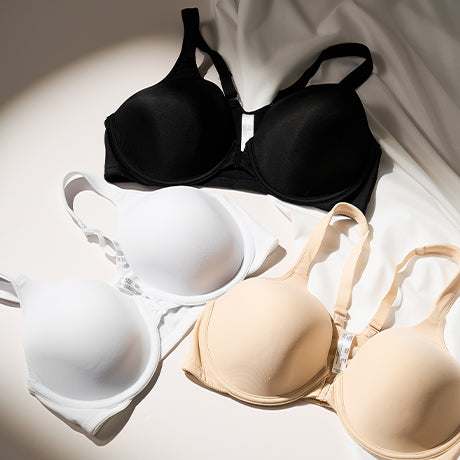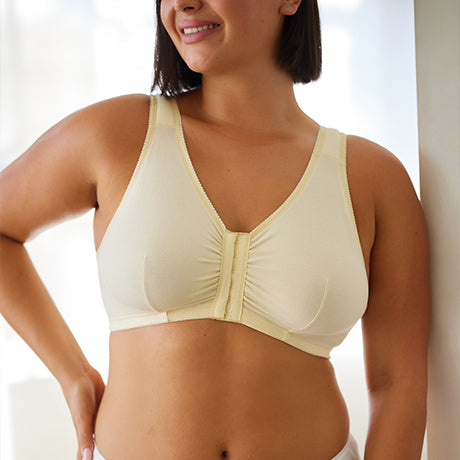Foods that are Surprisingly Bad for You
 We all want to eat healthier and essentially look and feel better, but while some of us might think we are on the road to reach our desired selves the “healthy” foods we are eating may be the thing holding us back. While some foods may say “fat-free,” “sugar free,” or even “gluten free” they could have added sugars, carbs, and unnecessary calories that are keeping you from losing your unwanted weight.
We all want to eat healthier and essentially look and feel better, but while some of us might think we are on the road to reach our desired selves the “healthy” foods we are eating may be the thing holding us back. While some foods may say “fat-free,” “sugar free,” or even “gluten free” they could have added sugars, carbs, and unnecessary calories that are keeping you from losing your unwanted weight.
In truth, you may think you’re eating healthy but instead you’re falling for the sneaky labels Food Company’s put on the front of their packages. Today we are sharing 11 foods that are surprisingly bad for you even though they are labeled “health” food.
- Agave: There has been much talk about the natural, sweetener Agave for the past year. Some have raved about it, and others have said its worse for you than regular sugar. Despite the debate there is definitely something to know about it. Agave comes from the blue agave plant, but much like high-fructose corn syrup, it is processed before eating and actually contains more calories per tablespoon than normal table sugar. In addition, agave is much sweeter than regular sugar, but most people use more agave than sugar because they think it’s okay because it’s labeled as a “health” food. Agave is fine to use as long as you keep to the normal serving size, but if you’re looking for a healthier substitute try Stevia.
-
 Yogurt Covered Snacks: Yogurt covered fruits, pretzels, and so on may seem healthy because you’re using low-fat yogurt and fruits, but in the end you could be feeding your body excess sugars, carbs, and fat. This all depends on what kind of yogurt you are using and its ingredients. Most yogurts are not healthy at all and the contents are usually oil, yogurt powder, sodium, and fats. Also when eating snacks like this they should be eaten at a minimal instead of a whole bag. Before making these types of snacks read the ingredients on your yogurt container to make sure there is a healthy amount of proteins and fiber. Furthermore, if you’re looking for a better alternative try Greek Yogurt with fresh fruit on top.
Yogurt Covered Snacks: Yogurt covered fruits, pretzels, and so on may seem healthy because you’re using low-fat yogurt and fruits, but in the end you could be feeding your body excess sugars, carbs, and fat. This all depends on what kind of yogurt you are using and its ingredients. Most yogurts are not healthy at all and the contents are usually oil, yogurt powder, sodium, and fats. Also when eating snacks like this they should be eaten at a minimal instead of a whole bag. Before making these types of snacks read the ingredients on your yogurt container to make sure there is a healthy amount of proteins and fiber. Furthermore, if you’re looking for a better alternative try Greek Yogurt with fresh fruit on top.
- Energy Bars/Nut Bars: While energy bars and nut bars are said to be for athletes and for a quick and healthy snack in between meals, there are hidden ingredients that could be adding extra sugar and saturated fat to your daily food intake. Some bars realistically could be meal replacements due to the high amount of calories they hold, and lots of times the amount of sugar and unhealthy fats in these bars are similar to candy bars and other junk food. To keep to a healthier diet you want to stick to bars which contain less than 200 calories and have healthy amounts of protein, fiber, and sugar. It’s also more beneficial and healthier to make your own energy/nut bars because you will know exactly what ingredients are in your snacks.
- Banana and Plantain Chips: This snack is by far one of the biggest upsets to health food. Fruit chips may seem like a healthy alternative to potato chips, but fried is fried. Dried fruits sometimes contain a lot of added sugar, and when they are fried they lose all nutritional value which leaves only sodium and fats. In the end they are not so different from potato chips. Read your labels! For a healthier option try fresh fruits or homemade veggie chips without the salt.
- Dried Fruits: It’s harder to eat 5-6 fresh fruits than it is to eat a whole bag of dried fruits, and this is where dried fruits can be a problem. While dried fruits can be a great source of fiber, vitamin a, magnesium, potassium, and calcium, they could be loaded with added sugar and preservatives. Stick to an appropriate helping when eating dried fruit to avoid the extra sugars and calories.
-
 Rice Crackers: This is another snack most people think is a healthy alternative for potato chips. Rice crackers have little to no nutritional value. You’re lucky if you find a brand that has some fiber and protein in them. With no nutrients the crackers are just refined carbs which are digested and converted into sugars. Although they may be better for you than potato chips, they can sometimes have just as much sodium and carbs if you’re eating more than the normal serving. If you still love your rice crackers try sticking to the plain versions.
Rice Crackers: This is another snack most people think is a healthy alternative for potato chips. Rice crackers have little to no nutritional value. You’re lucky if you find a brand that has some fiber and protein in them. With no nutrients the crackers are just refined carbs which are digested and converted into sugars. Although they may be better for you than potato chips, they can sometimes have just as much sodium and carbs if you’re eating more than the normal serving. If you still love your rice crackers try sticking to the plain versions.
- Flavored Soymilk: While the nutritional value of regular soymilk is great, flavored soymilk is another story. Flavored soymilk is high in sugars and unwanted calories. These drinks can have just as much sugar as desert or candy! Instead of the flavored varieties just stick with the plain or unsweetened choices.
- Smoothies: Smoothies can be a great morning breakfast or meal replacement if done correctly. Many people fall victim to adding too much to their smoothies such as proteins, foods high in sugars like ice cream and flavored milk, and extra fats like cream and peanut butters. You want to keep your smoothies to a minimum and add healthier items like greens, fresh or frozen fruits, Greek yogurt, superfoods, and good protein powders.
- Blue Corn Chips: You might think reaching for a bag of blue corn chips is the healthier decision compared to yellow corn chips; however, despite the fact that blue corn does contain healthy amino acids and antioxidants, it’s not true when they are turned into a chip. Blue corn chips are actually very similar to yellow chips and can contain just as much sodium. If you want to find a healthier substitute for your blue corn chips look for ones that have little to no salt added to them.
- Gluten Free/ Paleo: Gluten free and Paleo diets has been the talk of the town for the past few years. However, gluten free products might seem healthier when they are in fact not. Many gluten free items have added carbs and sugars. Although you are using healthier items to make your gluten free/paleo zucchini bread, you are still eating carbs. This is where you can get in trouble if you eat too much. All those extra carbs will be digested into sugars and turn into undesired fats. Stick to the appropriate serving size and always read the labels before you buy an item that says “gluten-free.”
-
 Couscous: Couscous was a huge fade a few years ago as the healthier option to pasta. While many people believe couscous to be a whole grain, it is in fact a small refined grain similar to white pasta. This is another food that can get you in trouble if you eat too much of it. Instead look for whole grain couscous or try something a little different like quinoa.
Couscous: Couscous was a huge fade a few years ago as the healthier option to pasta. While many people believe couscous to be a whole grain, it is in fact a small refined grain similar to white pasta. This is another food that can get you in trouble if you eat too much of it. Instead look for whole grain couscous or try something a little different like quinoa.
The best way to know what you’re feeding your body is to read labels instead of the flashy signs on the front of the package. Remember everything is about keeping to the regular serving size. Just because something is a health food doesn’t mean you should overconsume.
The post Foods that are Surprisingly Bad for You appeared first on Leading Lady.




